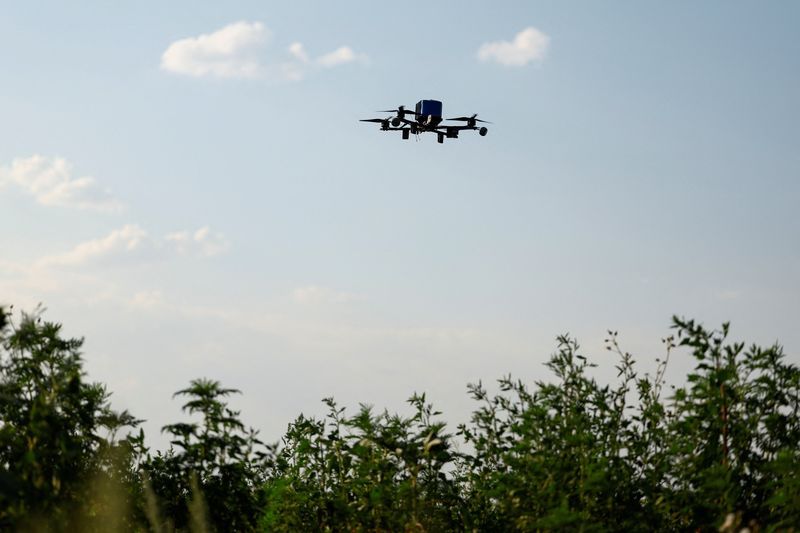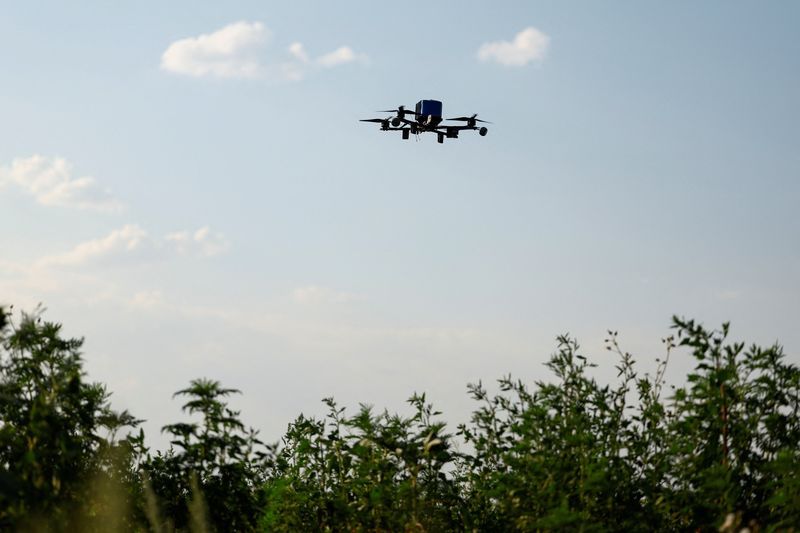
DNIPROPETROVSK REGION, Ukraine (Reuters) -When President Volodymyr Zelenskiy said at the end of last month that Ukraine needs $6 billion to fund the production of interceptor drones, setting a target of 1,000 a day, he had his reasons.
Having already reshaped the battlefield by doing work once reserved for long-range missiles, field artillery and human intelligence, drones are now fighting Russian drones – a boon for Ukraine’s dwindling stock of air defence missile systems.
In the last two months, just one Ukrainian charity supplying aerial interceptor drones says its devices have downed around 1,500 of the drones that Russia has been sending to reconnoitre the battlefield or to bomb Ukraine’s towns and cities.
INTERCEPTORS HELP TO SAVE VALUABLE MISSILE STOCK
Most importantly, such interceptors have the potential to be a cheap, plentiful alternative to using Western or Soviet-made air defence missiles, depleted by allies’ inability, or reluctance, to replenish them.
Colonel Serhiy Nonka’s 1,129th air defence regiment, which started using them a year ago to ram and blow up enemy drones, estimated that they could down a Russian spotter drone at about a fifth of the cost of doing so with a missile.
As a result, the depth to which these enemy reconnaissance drones can fly behind Ukrainian lines has decreased sharply, Nonka said.
Some estimates put the interceptors’ speed at over 300 kph (190 mph), although the precise figures are closely guarded.
Other units are using interceptors to hit the long-range Shahed “kamikaze” drones that Russia launches at Kyiv and other cities, sometimes downing dozens a night, according to Zelenskiy.
In the three and a half years since Russia invaded Ukraine at scale, drones have gone from an auxiliary tool to one of the primary means of waging war for both sides.
To chase them down, interceptor drones need to be faster and more powerful than those that have already revolutionised long-range precision strikes and aerial reconnaissance.
INTERCEPTOR DRONES TO BECOME UBIQUITOUS
Like the First-Person View drones that now dominate the battlefield, interceptor drones are flown by a pilot on the ground through the video feed from an onboard camera.
“When we started to work (with these drones), the enemy would fly at 800 or a thousand metres,” the officer who spearheaded their adoption by the 1,129th regiment, Oleksiy Barsuk. “Now it’s three, four or five thousand – but their (camera) zoom is not infinite.”
Most of the regiment’s interceptor drones are provided by military charities that crowdfund weapons and equipment through donations from civilians.
Taras Tymochko, from the largest of these, Come Back Alive, said it now supplies interceptors to 90 units.
Since the project began a year ago, the organisation says over 3,000 drones have been downed by equipment it provided, nearly half of them in the last two months.
However, such interceptors are still no match for incoming missiles or the fast jet-powered attack drones that Moscow has recently started deploying.
The organisation reports the value of the downed Russian craft at $195 million, over a dozen times the cost of the drones and equipment handed over under the project.
Sam Bendett, adjunct senior fellow at the Centre for a New American Security, said Russian forces were complaining about the effectiveness of large Ukrainian interceptors, but were also developing their own.
“We’re starting to see more and more videos of various types of interceptions by both sides … I think this is going to accelerate and it’s going to become more and more ubiquitous in the coming weeks.”
(Editing by Kevin Liffey)



